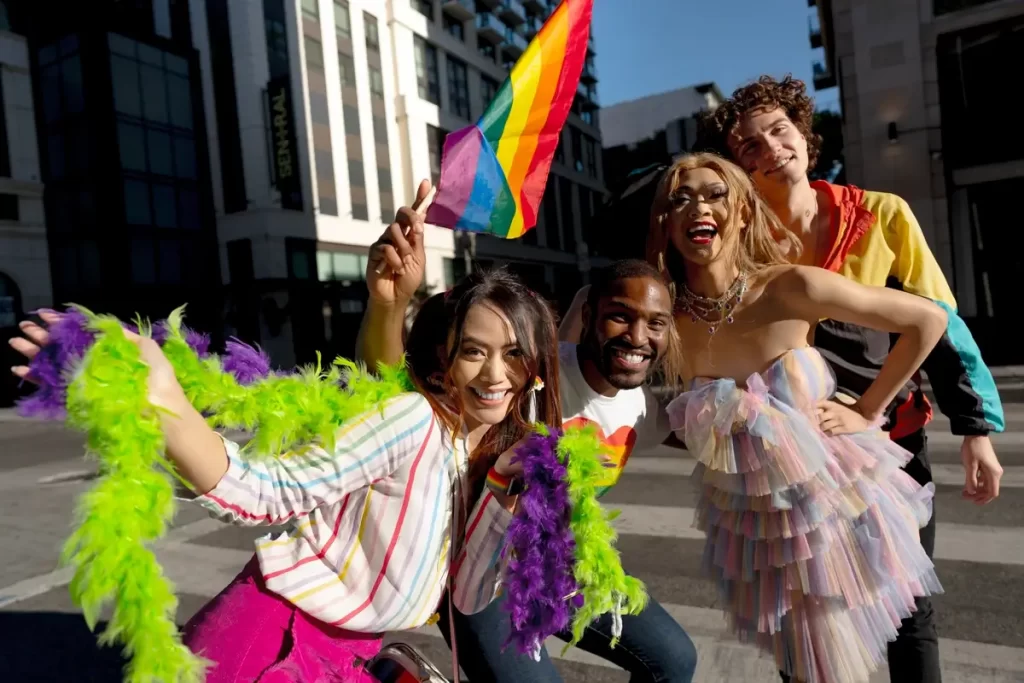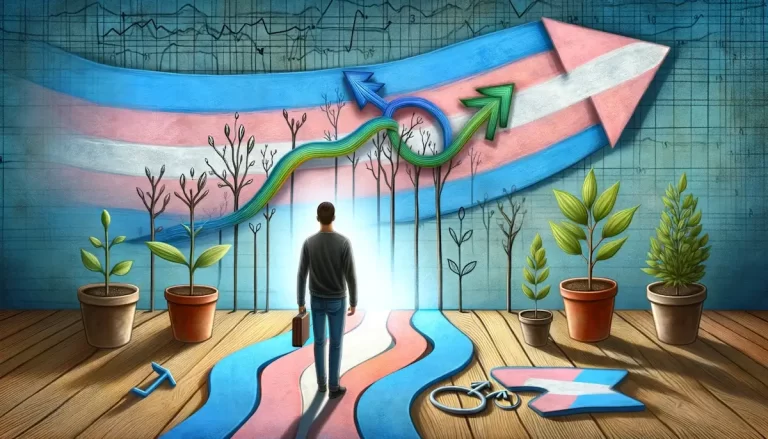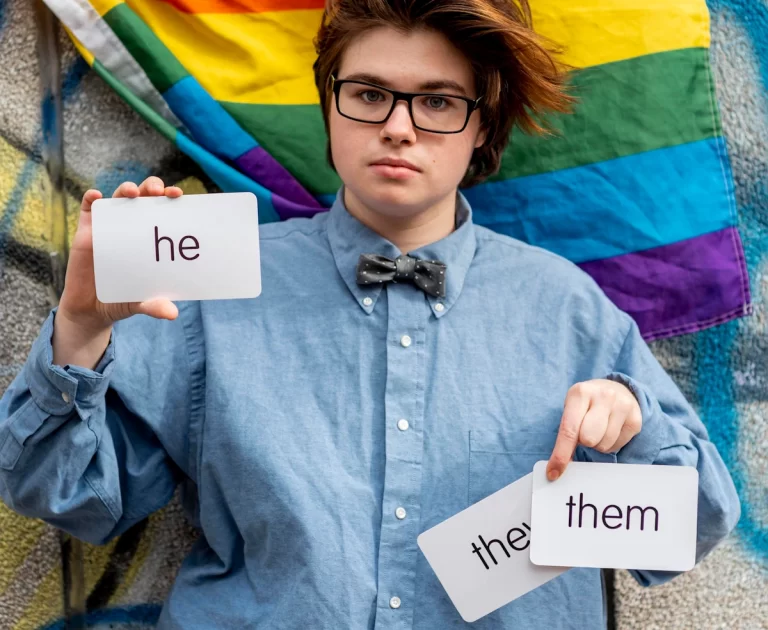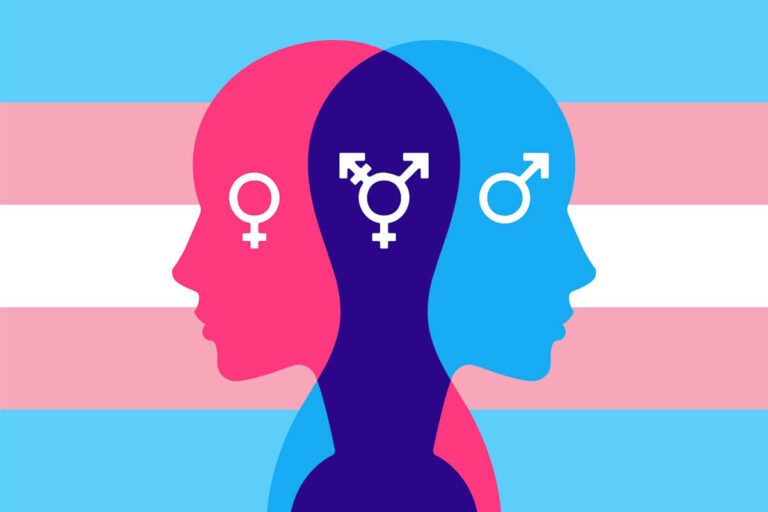Understanding the transgender community is important for creating a safe, inclusive, and tolerant society. You may have heard terms like "transgender," "cisgender," and "nonbinary," but may not be sure what they mean or how to talk about gender identity. This article provides an introduction to the trans community, covering definitions and diversity, statistics and discrimination, support, and advocacy, and personal and cultural representation. With this knowledge, you'll be better equipped to support trans people, advocate for their rights, and create a more inclusive environment for everyone.
By exploring the experiences of trans people, you can gain a better understanding of the issues they face. You'll learn about the challenges they face in society and celebrate their triumphs and achievements. Plus, you'll discover how to be an ally and how to create safe spaces and resources for transgender people and their loved ones. So let's dive in and explore the wonderful world of the transgender community!
Understanding Transgender People and the Basics of Gender Identity
Gaining insight into gender identity and the transgender experience is essential for fostering understanding and acceptance. Transgender is an umbrella term that encompasses people whose gender identity or expression differs from the gender they were assigned at birth. Transgender people are diverse and come from all backgrounds, and have existed throughout history. It is important to note that access to gender-affirming healthcare, legal documents, and public restrooms is limited for transgender individuals, and this lack of access contributes to higher rates of poverty, violence, and discrimination.
Transgender people face a unique set of challenges when it comes to gender identity, expression, and transition. It is important to remember that not all trans people transition in the same way or even at all and that gender transition may include changing clothing, appearance, name, and pronouns. Some trans people may choose to undergo hormone therapy or medical procedures to change their physical characteristics, while others may not. Additionally, nonbinary people may identify as neither a man nor a woman, or as a combination of both.
It is important to treat transgender people with respect according to their gender identity, not their sex assigned at birth. Respectful terminology should be used, and transgender people should be treated the same way as any other person - with kindness, empathy, and acceptance. The Human Rights Campaign provides resources and support for the trans community and allies, and the About Transsexual People resource hub provides more information. With understanding and support, the trans community can achieve greater visibility and equality.
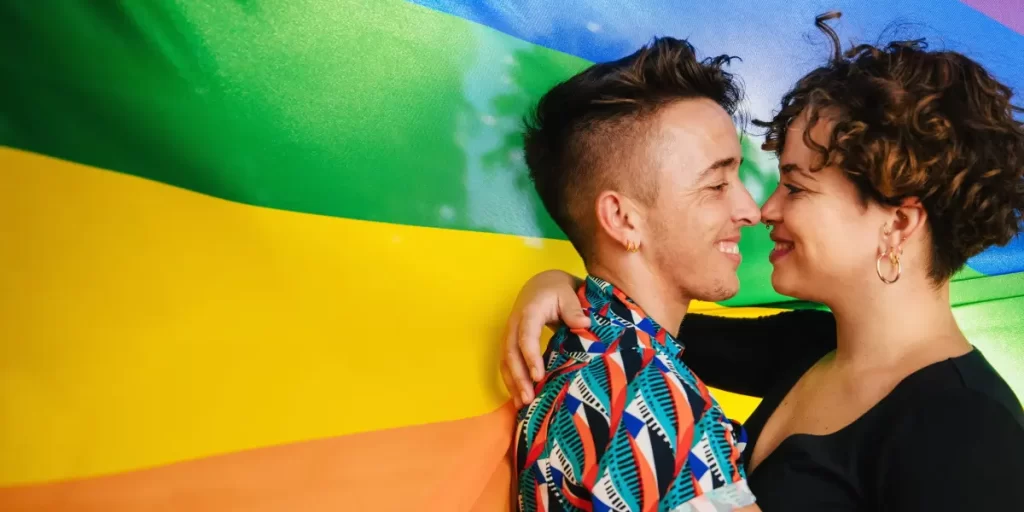
Defining Important Terms: Transgender, Cisgender, Nonbinary, and More
Getting to grips with terms like transgender, cisgender, and nonbinary is essential for understanding the trans community, so let's start there! Transgender is an umbrella term used to describe people whose gender identity is different from the gender they were assigned at birth, which is typically either male or female. Cisgender is an adjective used to describe someone who identifies with the gender they were assigned at birth. Nonbinary is a term used to describe people who don't identify as exclusively male or female and may identify as genderqueer, agender, bigender, or gender non-conforming. Queer people are those who don't conform to conventional gender norms or who express an attraction to people of the same gender.
Transgender people come from all backgrounds and faith traditions. Gender identity is an internal sense of being male, female, or something else, while gender expression is how a person presents their gender on the outside. Trans people may opt for hormone therapy and medical procedures to alter physical characteristics, although this isn't a requirement for living according to one's gender identity. Respect and acceptance of transgender people require respect for their gender identity and using respectful terminology.
The Human Rights Campaign offers resources to better understand trans people, including news, events, and resources of interest, and merchandise purchases to fuel the fight for equality. trans people are parents, siblings, kids, coworkers, neighbors, and friends, and there are a variety of celebrities who have increased visibility for the trans community. With more understanding and knowledge, we can help create a world where transgender people are treated with respect and free from discrimination. To learn more about the key differences between sexual orientation and gender identity, let's explore further.
Sexual Orientation vs. Gender Identity: The Key Differences
It's important to note the key differences between sexual orientation and gender identity, so let's dive in! When defining gender identity, it's important to understand the following concepts:
- Binary: A gender binary is the idea that there are only two genders – male and female.
- Gender identity: An individual’s internal sense of being male, female, or something else.
- Sex assigned at birth: This term is used to describe the sex label assigned to someone when they are born.
- Transgender: An umbrella term for people whose gender identity differs from the sex assigned at birth.
Gender identity is distinct from sexual orientation. Gender identity is how a person identifies themselves, while sexual orientation is who they are attracted to. For example, a transgender woman may identify as a woman and be heterosexual, bisexual, pansexual, or any other orientation.
It is also important to remember that transgender people deserve the same rights and respect as cisgender people. Transgender people experience discrimination and stigma in many aspects of their lives and it is essential that we take a stand against hate and injustice. It is important to show support for the transgender community by educating ourselves, using respectful language, and advocating for transgender rights.
| Pro Tip: |
|---|
| Curious about the process of sex reassignment surgery (SRS)? Our informative guide on Sex Reassignment Surgery (SRS) breaks down the journey, procedures, and what to expect during this transformative experience. |
Navigating the Gender Transition Process: What to Expect
Navigating the gender transition process can be an overwhelming experience, but it doesn't have to be. For transgender people, it is important to understand the key differences between gender identity and gender expression, as well as the distinction between sex and gender. Gender identity is a person's internal knowledge of their gender, while gender expression is how a person presents their gender on the outside. Sex is the label assigned at birth based on the appearance of the genitalia, while gender is a socially constructed set of roles, behaviors, and attributes. The gender transition process may involve changing clothing, appearance, name, and gender pronouns, as well as hormone therapy and medical procedures to change physical characteristics. Nonbinary people may identify as neither a man nor a woman, or as a combination of male and female, and it is important to treat transgender people with respect according to their gender identity.
Championing Transgender Rights: Overcoming Challenges and Building a More Inclusive Society
The transgender community faces unique challenges in society, from a lack of legal protection from discrimination and harassment to a lack of accurate identity documents. In addition, transgender people lack healthcare coverage, face stigma and discrimination in many contexts, and are often rejected by family, friends, or coworkers upon learning about their trans identities. It is essential to be an advocate for the trans community and use respectful terminology and treat transgender people as you would any other person. The Human Rights Campaign (HRC) is a great resource for support and advocacy for the transgender community and provides information on news, events, and resources of interest to the general public.
Progress is being made in terms of increasing the visibility and acceptance of transgender people, but there is still much work to be done. More people are becoming aware of transgender issues and are willing to support trans rights, but the lack of legal protection and access to resources still puts transgender people at risk. By increasing visibility, we can create a more inclusive and equitable society for transgender people. With more education and understanding, we can create a world where transgender people feel safe, respected, and accepted.

The Challenges Transgender People Face in Society
As a society, we still have a long way to go when it comes to ensuring transgender people's safety, respect, and acceptance. Transgender people face systemic inequality, stigma, and discrimination in many facets of life. From being denied access to public bathrooms that correspond with their gender identity, to being rejected by family, friends, or coworkers upon learning about their trans identities, to facing harassment and violence, trans people often face an uphill battle for equality and acceptance.
Transgender people also lack access to adequate healthcare and legal protection from discrimination based on gender identity. They may also be denied access to public services due to a lack of accurate identity documents. In addition, fees for processing new identity documents may make them unaffordable for some members of the trans community. This all contributes to the systemic inequality and discrimination that transgender people face.
Trans people are also often denied their right to vote due to harassment or lack of access to proper identification documents. Furthermore, only 30% of women's shelters are willing to house trans women, and some states require evidence of medical transition to update identification documents. This creates additional barriers to accessing basic human rights and services. The transgender community deserves our support and advocacy to ensure that their rights and safety are respected.
The Importance of Allies and Support for the Trans Community
You can make a difference in the lives of transgender people by becoming an ally and supporting them in their fight for equality and acceptance. Being an ally isn’t just about being an advocate; it’s about understanding and respecting the trans community. Trans youth, in particular, need more support, especially in terms of access to medical procedures and gender-affirming care. It’s important to recognize the diversity of gender identities and expressions and provide trans people with the support they need to get the care they deserve.
Support groups and safe spaces are essential for the mental health and well-being of the trans community, and allies can play an important role in creating and maintaining these spaces. Allies can help provide a sense of acceptance and understanding for trans people, particularly for trans youth. Allies can also serve as mentors, providing guidance and support to trans youth who may be struggling to find acceptance in their own families or communities.
It’s also important for allies to understand the intersection of gender identity and sexual orientation in the trans community. Trans people can have any sexual orientation, and it is important to recognize and respect the unique experiences of each individual. Allies can help create a safe and supportive environment for trans people of all orientations and provide support and resources to ensure they can get the care they need. By understanding these issues and providing support and acceptance, allies can make a huge difference in the lives of trans people.
| Pro Tip: |
|---|
| Let's debunk the myths surrounding trans dating! Our eye-opening piece on 10 Misconceptions about Trans Dating clears up common misunderstandings and helps create a more inclusive and accepting environment for love to thrive. |
The Intersection of Gender Identity and Sexual Orientation in the Trans Community
Understanding the intersection of gender identity and sexual orientation in the trans community is essential for allies to provide meaningful support and acceptance, and to create a safe and inclusive environment. While gender identity and sexual orientation are two distinct concepts, they are often seen as interconnected in the trans community. Gender identity is a person’s internal knowledge of their gender, which may be different from the gender they were assigned at birth.
Gender expression is how a person presents their gender on the outside. Cisgender refers to someone whose gender identity matches the gender they were assigned at birth. On the other hand, sexual orientation is a person’s emotional, romantic, or sexual attraction to another person. Transgender people may identify as any sexual orientation, including lesbian, gay man, bisexual, pansexual, asexual, and more. Additionally, people may identify as gender queer, nonbinary, gender non-conforming, or agender, among other identities. As allies, we can create a safe and accepting space for trans people by respecting and validating all gender identities and sexual orientations.
Unraveling the Complexities: Gender Identity, Sexual Orientation, and the Unique Journey of Transition
To further understand the intersection of gender identity and sexual orientation, it is important to recognize that gender and sex are two distinct concepts. Sex is typically assigned at birth and is based on the appearance of genitalia. In contrast, gender is a social construct and is based on roles, behaviors, and attributes that are associated with the sexes. Therefore, gender identity is different from sex, although sex and gender are often seen as linked.

It is also important to recognize that gender transition is a process that is unique to each person. Transitioning may include changing clothing, appearance, name, and pronouns. For some transgender people, hormone therapy and medical procedures may be used to change physical characteristics. Ultimately, understanding the intersection of gender identity and sexual orientation in the trans community is essential for allies to provide meaningful support and acceptance. By creating a safe and inclusive environment that respects and validates all gender identities and sexual orientations, we can foster an environment of acceptance and understanding.
Legal and Healthcare Rights for Transgender Individuals: A Global Perspective
Gazing across the globe, it's clear that transgender individuals face unique legal and healthcare challenges, from accessing accurate identification documents to finding affirming healthcare providers. Transgender people are used to describe people whose gender identity differs from the sex they were assigned at birth. In many places, trans individuals are not legally protected against discrimination based on gender identity. This means that in some places, trans people are not able to use the bathroom of the gender they identify with or even access public services.
Legal documents, such as identification cards or passports, are used to describe a person's sex or gender. However, many states require evidence of medical transition in order to change the gender marker on legal documents. This can put a huge financial strain on transgender people, as they may have to pay fees to process the paperwork and update the documents. Furthermore, the lack of healthcare coverage is a significant issue for the transgender community, as medical transition procedures are often not covered by insurance.
Transgender people also face discrimination when seeking housing or dining in a restaurant. Harassment has even led some members of the trans community to avoid exercising their right to vote. This is compounded by the fact that only 30% of women's shelters are willing to house trans women. It's clear that transgender individuals around the world have to fight for their rights every day and face numerous hurdles when trying to access healthcare and legal services. With greater awareness and support, transgender individuals can finally get the rights and recognition they deserve.
Mental Health and Well-being in the Transgender Community
Facing discrimination and a lack of legal and healthcare rights, the trans community often struggles to find the mental health and well-being they deserve, making it a grueling journey to climb the mountain of acceptance. It is important for cisgender people to understand the trans community and the challenges they face. To begin, it is important to note that gender identity refers to the internal knowledge of a person’s gender, and gender expression is how they express their gender identity. People who are transgender often have difficulty expressing their gender identity, which can lead to mental health issues like depression and anxiety.
The lack of acceptance and understanding of the trans community can lead to more serious issues like self-harm and suicide. It is important to be aware of the mental health needs of the transgender community. There are organizations and resources available to provide support, such as the Human Rights Campaign and The Trevor Project. Furthermore, having a support system of family, friends, and professionals is key to the mental health and well-being of the transgender community.
It is also important to celebrate the triumphs and achievements of people who are trans. From celebrities like Laverne Cox and Jazz Jennings, to everyday activists like Grace and Alex, transgender people are continuing to show the world that they are powerful, resilient, and proud. By understanding and celebrating the transgender community, we can create a world where everyone can thrive and be accepted for who they are.
| Pro Tip: |
|---|
| To further explore the inspiring stories of those who've made a lasting impact, don't miss our article on Influential Transwomen. |
Celebrating the Triumphs and Achievements of Transgender People
You can celebrate the incredible accomplishments of transgender people in their fight for acceptance and understanding. From Laverne Cox and Jazz Jennings to everyday transgender people, the transgender community has achieved countless triumphs. Here is a look at some of the most important wins:
| Wins | Description |
|---|---|
| Visibility | Trans people are becoming more visible in the media and are featured in TV shows, movies, and documentaries. |
| Activism | Trans people are advocating for their rights and bringing attention to issues that affect the community, such as discrimination and violence. |
| Acceptance | More and more people are accepting trans people for who they are, and society is becoming increasingly tolerant of gender diversity. |
The transgender community also has something special to offer the world. Trans people bring unique perspectives and experiences that can contribute to a more diverse and inclusive society. The trans community is not just fighting for their rights, but also for the rights of all people to be seen, heard, and respected. As allies, we must continue to educate ourselves and others so that we can create a world where everyone can feel safe and respected, no matter what gender they identify as.
Educating Ourselves and Others: The Role of Allies in Promoting Acceptance
As an ally to the transgender community, it is important to educate yourself and others about transgender issues and create an environment of acceptance. To do so, it is essential to understand that gender expression differs from assigned sex at birth and that people may identify as transgender, nonbinary, or gender nonconforming. It is also important to recognize that transgender people may not feel that their gender identity matches the gender they were assigned at birth and work to ensure that people understand and accept that.
When engaging in conversations about transgender issues, it is important to use respectful language and terminology, as well as be open to learning about different experiences. As an ally, it is also important to recognize the various forms of discrimination and violence experienced by trans and gender-nonconforming people and to take action to create a more equitable and inclusive society.
It is essential to recognize that the transgender community is diverse and complex and to make sure that trans people are included in conversations and decisions that affect them. By educating ourselves and others, we can create an environment where trans people are accepted and respected, and work towards a future where everyone is able to live authentically and without fear of discrimination. This is an important step towards creating safe spaces and resources for trans people and their loved ones.
| Pro Tip: |
|---|
| Ready to explore the world of trans dating? Look no further than Trans Dating, a platform designed to connect you with like-minded individuals who appreciate and celebrate the diversity of the transgender community. |
Safe Spaces and Resources for Transgender People and Their Loved Ones
Being an ally to the transgender community involves creating safe spaces and providing resources so that everyone can live authentically and without fear. It is important to recognize that gender identity is different from the sex associated with a person at birth and that individuals have the right to describe their gender in whatever way they choose. Within the transgender community, everyone has a unique way of expressing their gender identity, and it is important to respect and honor these differences.
Creating safe spaces for transgender individuals is essential, as they are often subject to discrimination and exclusion, even within the LGBT+ community. This can include providing access to gender-affirming healthcare and mental health services, as well as ensuring that trans people have access to gender-neutral bathrooms and other public spaces. Additionally, providing support to trans people and their loved ones is an important part of allyship, as the process of transition can be a difficult one. Connecting trans people with resources such as support groups and legal services can help ensure their safety and well-being.
Finally, it is important to recognize the power of language and its impact on the transgender community. Using language that is respectful and affirming of one’s gender identity is an essential part of creating safe and welcoming spaces. As allies, it is our responsibility to ensure that all members of the transgender community are seen, heard, and respected.
Conclusion: Embracing Diversity and Supporting the Transgender Community
By embracing diversity and supporting transgender people in our communities, we can create a more inclusive, equitable, and safer world for everyone. Gender identity is an integral part of each individual, and it is important to recognize this diversity in order to create a better society. Many transgender people struggle to find acceptance and have difficulty finding resources that match their gender identity. We can all take action to show our support for the members of the transgender community, even if it’s just showing kindness to someone you know.
Start by educating yourself. Learn about the unique experiences of the transgender community and how the lack of acceptance can lead to higher rates of poverty, violence, and discrimination. There are many resources available that provide valuable information and can help us gain a better understanding of the challenges faced by transgender people.
We can all use our voices to make a difference. Speak out against transphobia, advocate for transgender-inclusive policies, and use your platform to raise visibility for the transgender community. By taking the time to stand up for those who are marginalized and discriminated against, we can create a world where everyone is respected and accepted regardless of their gender identity. Together, we can make a difference

